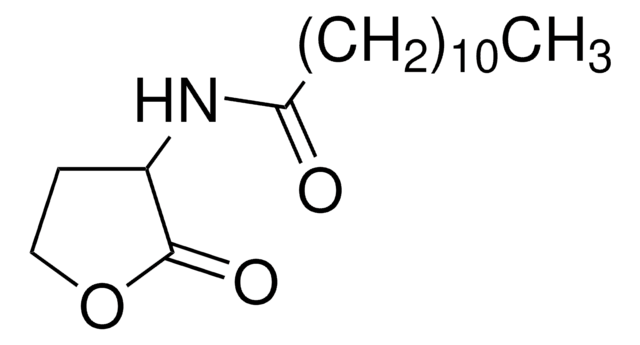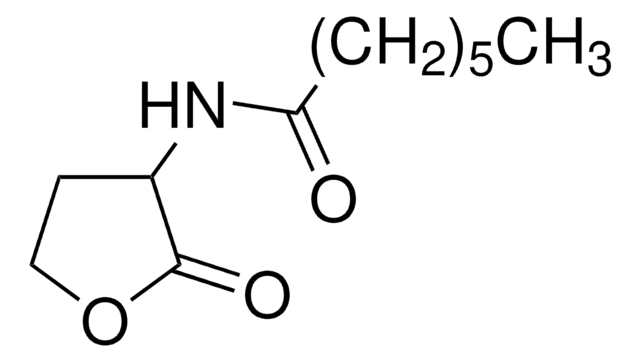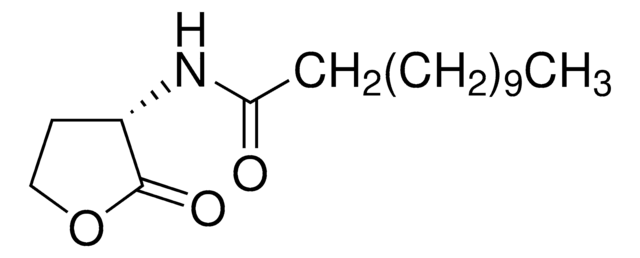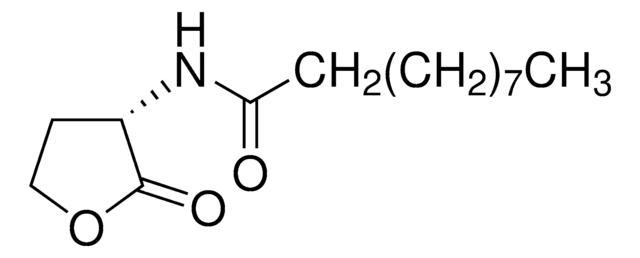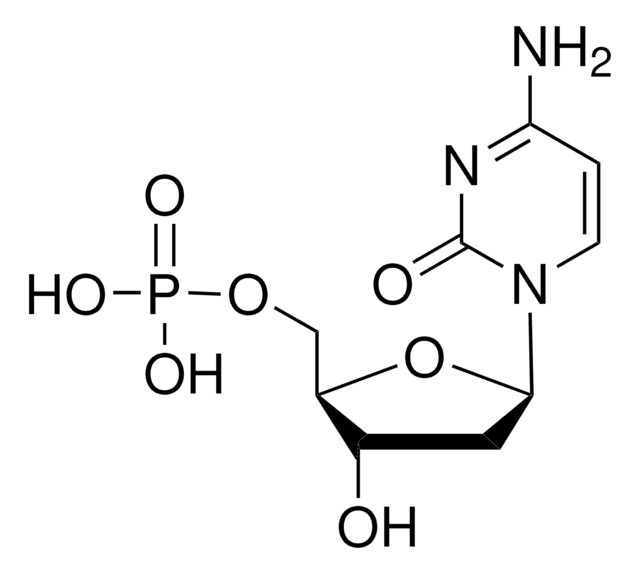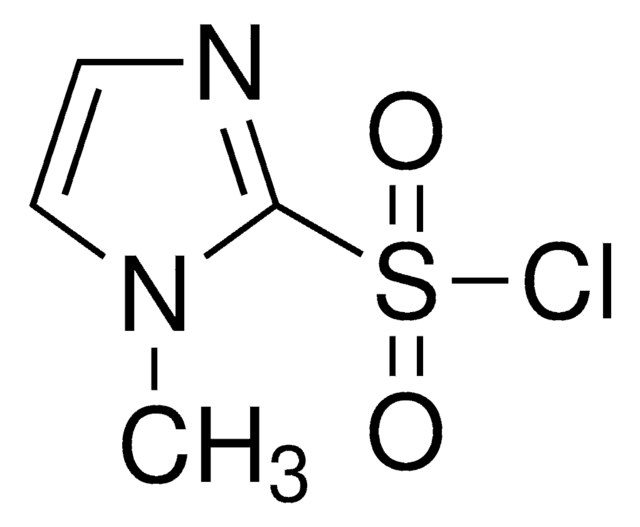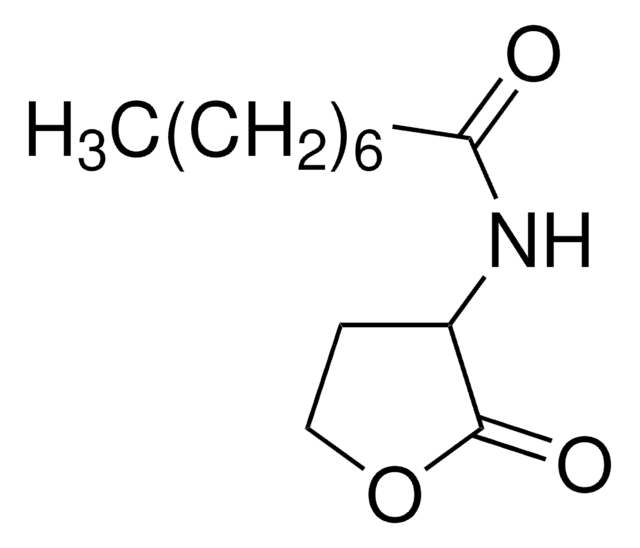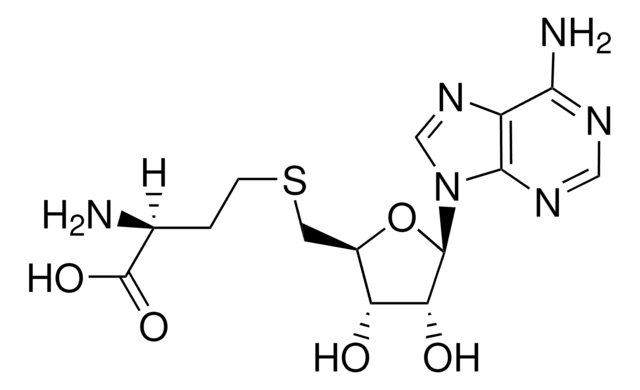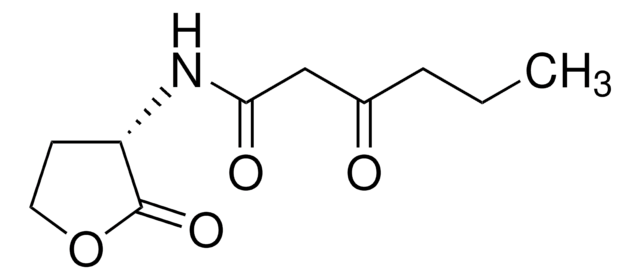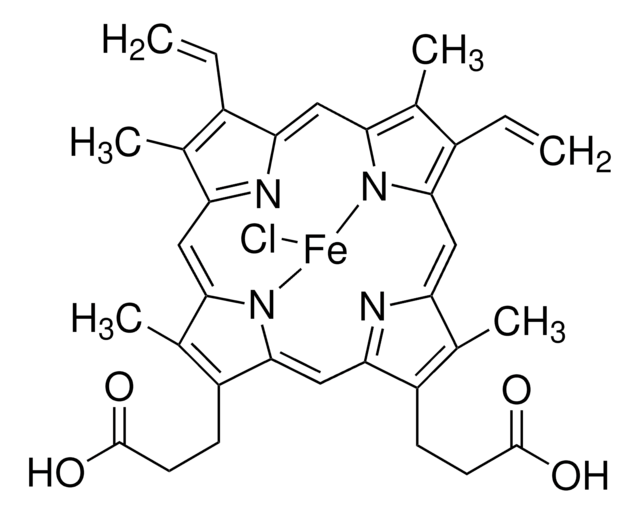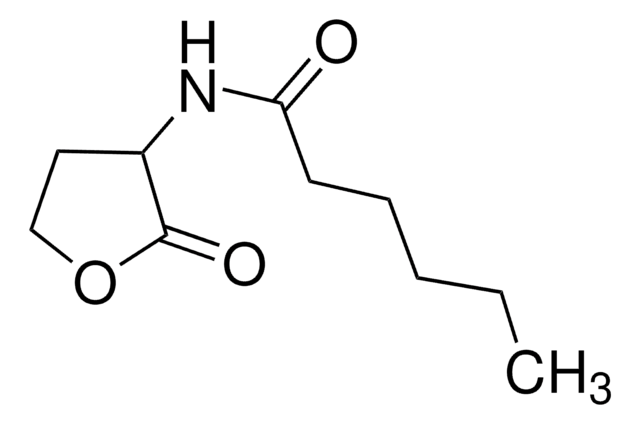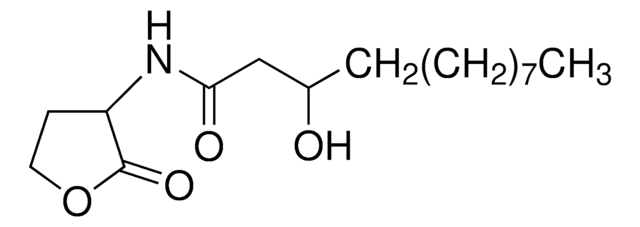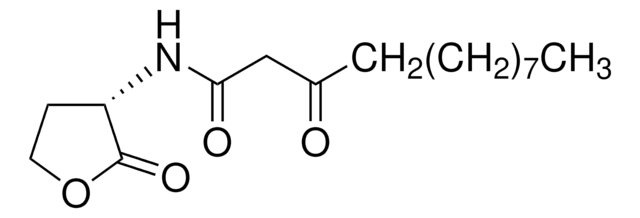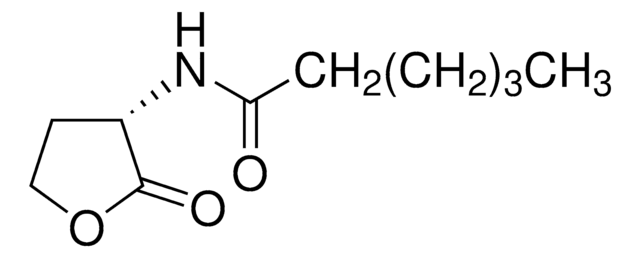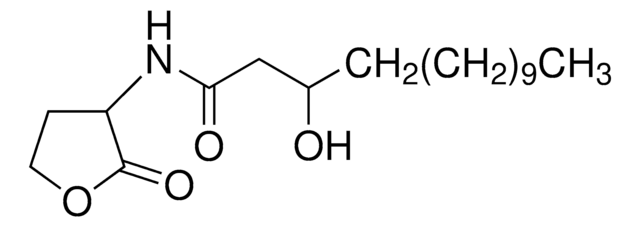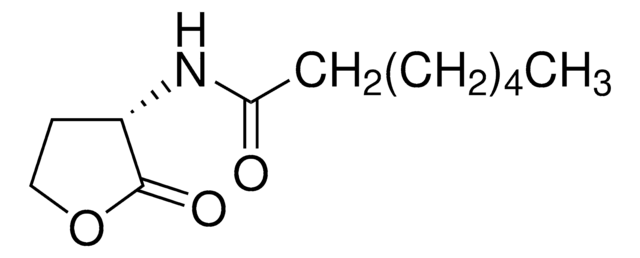10937
N-Tetradecanoyl-DL-homoserine lactone
≥97.0% (HPLC)
Synonym(s):
N-Myristoyl-DL-homoserine lactone
Sign Into View Organizational & Contract Pricing
All Photos(1)
About This Item
Empirical Formula (Hill Notation):
C18H33NO3
CAS Number:
Molecular Weight:
311.46
Beilstein:
1649579
MDL number:
UNSPSC Code:
12352209
eCl@ss:
32160406
PubChem Substance ID:
NACRES:
NA.26
Recommended Products
Product Name
N-Tetradecanoyl-DL-homoserine lactone, ≥97.0% (HPLC)
Quality Level
Assay
≥97.0% (HPLC)
form
powder
color
white to slightly yellow
application(s)
cell analysis
storage temp.
2-8°C
SMILES string
CCCCCCCCCCCCCC(=O)NC1CCOC1=O
InChI
1S/C18H33NO3/c1-2-3-4-5-6-7-8-9-10-11-12-13-17(20)19-16-14-15-22-18(16)21/h16H,2-15H2,1H3,(H,19,20)
InChI key
ZQAYHOXXVBVXPZ-UHFFFAOYSA-N
Application
Induces violacein expression in a Chromobacterium violaceum mutant usually not able to produce homoserine lactones.
Biochem/physiol Actions
N-Tetradecanoyl-DL-homoserine lactone (C14-HSL) is among a group of homoserine lactones that includes; N-Heptanoyl-DL-homoserine lactone (C7HSL), N-octanoyl-homoserine lactone (N-C8-HSL), N-Decanoyl-DL-homoserine lactone (N-C10-HSL), N-Dodecanoyl-DL-homoserine lactone (C12-HSL), N-(3-oxodecanoyl) homoserine-L-lactone (3-oxo-C10 HSL), N-(3-oxododecanoyl)homoserine-L-lactone (3-oxo-C12-HSL), N-(3-Oxotetradecanoyl)-L-homoserine lactone (3-oxo-C14-HSL, N-(3-hydroxydecanoyl)-L-homoserine lactone, and N-(3-hydroxyoctanoyl)-L-homoserine lactone involved in the processes of bacterial quorum sensing. These N-acyl-homoserine lactones are used to study the processes and mechanisms of bacterial quorum sensing.
N-Tetradecanoyl-DL-homoserine lactone is a member of N-acyl-homoserine lactone family. N-acylhomoserine lactones (AHL) regulate gene expression in gram-negative bacteria, such as Echerichia and Salmonella are involved in quorum sensing, cell to cell communication among bacteria. Some AHLs are potent chemoattractants for human immune cells such as neutrophils.
Storage Class Code
11 - Combustible Solids
WGK
WGK 3
Flash Point(F)
Not applicable
Flash Point(C)
Not applicable
Personal Protective Equipment
dust mask type N95 (US), Eyeshields, Gloves
Choose from one of the most recent versions:
Already Own This Product?
Find documentation for the products that you have recently purchased in the Document Library.
Customers Also Viewed
Francisco Pérez-Montaño et al.
Research in microbiology, 162(7), 715-723 (2011-05-24)
Legume-nodulating rhizobia use N-acyl homoserine lactones (AHLs) to regulate several physiological traits related to the symbiotic plant-microbe interaction. In this work, we show that Sinorhizobium fredii SMH12, Rhizobium etli ISP42 and Rhizobium sullae IS123, three rhizobial strains with different nodulation
Ali E McClean et al.
Phytopathology, 102(2), 195-203 (2012-01-13)
Several members of the bacterial genus Brenneria are pathogenic on different tree species. Cell-free extracts from the bacterial phytopathogens Brenneria rubrifaciens, B. salicis, and B. nigrifluens induced production of the red pigment rubrifacine in the B. rubrifaciens bruI insertional mutant
Frank Wilco Bartels et al.
Biophysical journal, 92(12), 4391-4400 (2007-03-27)
Intercellular communication by means of small signal molecules coordinates gene expression among bacteria. This population density-dependent regulation is known as quorum sensing. The symbiotic nitrogen-fixing bacterium Sinorhizobium meliloti Rm1021 possesses the Sin quorum sensing system based on N-acyl homoserine lactones
Selvaraj Poonguzhali et al.
Journal of microbiology and biotechnology, 17(2), 226-233 (2007-12-07)
Members of Methylobacterium, referred as pink-pigmented facultative methylotrophic bacteria, are frequently associated with terrestrial and aquatic plants, tending to form aggregates on the phyllosphere. We report here that the production of autoinducer molecules involved in the cell-to-cell signaling process, which
Thommie Karlsson et al.
Journal of leukocyte biology, 91(1), 15-26 (2011-08-03)
In gram-negative bacteria, cell-cell communication based on HSL QS molecules is known to coordinate the production of virulence factors and biofilms. These bacterial signals can also modulate human immune cell behavior. Using a Transwell migration assay, we found that human
Our team of scientists has experience in all areas of research including Life Science, Material Science, Chemical Synthesis, Chromatography, Analytical and many others.
Contact Technical Service